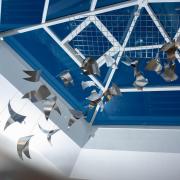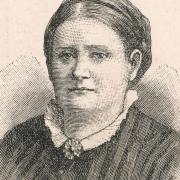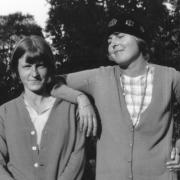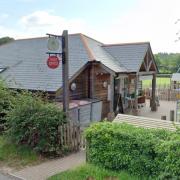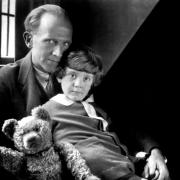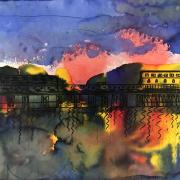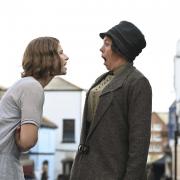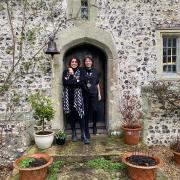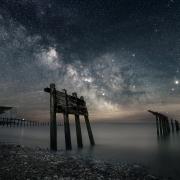For more than three decades, a farmhouse in Chiddingly in rural East Sussex was a meeting point for prominent avant-garde painters, photographers and writers. Its walls were painted in bright colours and hung with works by Pablo Picasso, Leonora Carrington and Joan Miró, friends of the owners of the house who moved there in 1949: Sir Roland Penrose, a surrealist artist, historian and poet; and his wife, the photographer Elizabeth Miller.
Miller (1907-1977), an American known to all as ‘Lee’, had been a model with Vogue and Vanity Fair, enjoying the high life in New York and Paris, living and loving freely. Witty, pretty and a wonderful storyteller, the art world flocked to her company. She formed close relationships with actor and filmmaker Charlie Chaplin and surrealists Man Ray and René Magritte as she forged her own successful career in commercial and surrealist photography. But when the Second World War broke out, she saw a greater purpose for her art and, swapping fashion for the front line, reinvented herself as a photojournalist and war correspondent. In khakis with a Rolleiflex camera slung about her neck, Lee inserted herself in a male world, capturing in stark honesty the siege of St Malo, the battle of Alsace and the liberation of Buchenwald and Dachau concentration camps.
LEE, the film
LEE, a new film about Lee Miller starring Kate Winslet, will bring the fascinating story of this Sussex icon to wider audiences. Distributed by Sky Cinema UK, the film premiered at the Toronto International Film Festival in September and is expected to be released in December. The 116-minute movie, which co-stars Alexander Skarsgård as Roland Penrose, boasts a star-studded cast including Marion Cotillard, Andrea Riseborough and Josh O’Connor, and is directed by Ellen Kuras (The Betrayal, 2008; Eternal Sunshine of the Spotless Mind, 2004). Winslett is already being tipped for a Best Actress Oscar for her portrayal of the photographer, according to Variety.
The script was created in collaboration with The Lee Miller Archives in Sussex and took its lead from the book The Lives of Lee Miller, first published by Thames & Hudson in 1985, and written by Miller’s son, Antony Penrose, who acted as a consultant to the production team. Penrose’s biography is based on the careful piecing together of Miller’s life from letters, photographs and his own memories. It tells the story of her endless reinvention from a rebellious child growing up in Poughkeepsie, New York State, to taking the iconic image of herself in Hitler’s bathtub, through to her final years cooking and gardening at Farley Farmhouse, now better known as Farleys House & Gallery, open to the public Sundays and Thursdays, April to October, and managed by family members.
LEE, however, centres around the Second World War, homing in on the period between 1938 and 1948 when Miller’s career path took a dramatic turn. As a fashion model, men had turned the lens on her. Now the camera was in her hands and was about to make history.
At first she stayed on home ground, recording life in London in the Blitz and women’s contribution to the war effort, but by 1944 she had taken to the battlefield, breaching a ban on female war correspondents to report back to Vogue. Her photographs documented the horrors of armed conflict, including one of the first uses of napalm, and created unforgettable records of those who witnessed the liberation and those for whom it was too late. The risks she took and the trauma she bore as a result has left a legacy of priceless historical sources.
‘To me, she was a life force to be reckoned with, so much more than an object of attention from famous men with whom she is associated,’ said Winslet, who is also co-producer on the film. ‘This photographer, writer, reporter, did everything she did with love, lust, and courage, and is an inspiration of what you can achieve, and what you can bear, if you dare to take life firmly by the hands and live it at full throttle.’
Lee Miller: Dressed
Miller was such a prolific photographer and keen collector of art that Farleys House & Gallery has long struggled with storage space. In the hope that the attic of the house might offer a solution, staff members were recently asked to take a look up there. What they discovered would only exacerbate the storage crisis. In a bag labelled ‘rags’ were clothes that bore witness to Miller’s incredible life: a revealing Jacques Heim bikini that, according to Miller’s letters, had scandalised fellow passengers on a boat journey from Marseille to Egypt; a chic wool ski suit seen in photographs of a fashion assignment in Switzerland, a turning point in Miller’s life as she had just discovered she was pregnant; and the baggy cords and sheepskin waistcoat that Miller would wear about the farm in her later life, when managing the livestock, the orchard and the vegetable garden gave rise to a new career as a celebrity chef.
‘They were all just screwed up in a ball in this bag,’ says Ami Bouhassane, granddaughter of Lee Miller and Director of Farleys House & Gallery, who recognised many of the items from photographs but was astonished to see that the actual garments had faded less than the prints.
The discovery was the impetus behind Lee Miller: Dressed, which opened at Brighton Museum & Art Gallery in October and runs until 18 February 2024. The exhibition tells Miller’s story through clothing, highlighting seven places and periods in Lee’s life and her creative outputs at each time. There’s the young fashion model breaking hearts in New York City, for example; and the bored expat wife of first husband Aziz Eloui Bey, pacing a staffed mansion in Egypt and finding temporary escapism in dramatic expeditions in the desert.
Exploring these new finds was, says Bouhassane, a bit like ‘forensic fashion’. Most of the photographs of Miller were in black and white and it was a challenge to match them up with the garments. A maternity dress was easier to date as Miller had just one child, Antony. On closer examination, it proved to be an ordinary dress that had been unpicked and expanded around the waist − the perfect example of 1940s make do and mend.
‘I love the title of the show, Lee Miller: Dressed, because before she became well known, she was better known as being undressed and the muses of various other artists,’ says Bouhassane. ‘It’s a really nice, different way of looking at her, and I think that people that know Lee already will come away having seen a different side of her.’
A new life at Farleys
The Lee Miller that, in her forties, took up a new adventure in a farmhouse in East Sussex wore the scars of an extraordinary but turbulent life. The devastating rape of seven-year-old Miller while staying with family friends altered her childhood forever, but – outwardly – she kept up the exhausting show of strength that would come to define her, and the fierce will and defiant nature that also saw her expelled from several schools.
Her heavy drinking and bouts of depression were doubtless also due to the untreated trauma of what she had witnessed during the war years. ‘She’d never spoken about anything that she’d done during the war,’ Bouhassane says. Had it not been for the discovery in 1977 of Miller’s negatives, the family would never have known how much she had seen and done. On the same day that Hitler would put a gun to his head in a bunker in Berlin, Lee Miller, first on the scene, was soaping herself in the bath of his abandoned apartment in Munich. But no amount of washing could remove the indelible memories of what she had seen hours before in nearby Dachau – the emaciated prisoners and the unburied dead – and after a couple of years in London, with a new husband and new baby, this picturesque farm in the Sussex countryside offered a fresh start.
For Lee Miller and her husband Roland Penrose, Farleys seemed perfect. Sussex had long had a special place in Penrose’s heart. ‘Roland had a really stiff upbring,’ says Bouhassane. ‘One of his happiest memories was when he, as a kid, used to sometimes be allowed to come and stay with some of his family who had a farm in Herstmonceux.’
With hard graft, the farm also yielded an abundance of food, which helped enormously during rationing. The couple embraced the country life, with Miller even building her own cream separator and learning how to butcher a cow. And as the house was close to the ferry port of Newhaven, they could still keep up with all their distinguished friends across the channel, including the poet Paul Éluard and artists Pablo Picasso, Max Ernst and Man Ray, who all visited them at Farleys.
Model, photographer, war journalist, raconteuse and hedonist, and now farmer and talented cook − Lee Miller showed that women could turn their hands to anything and seized every new opportunity with gusto. As Antony Penrose writes in The Lives of Lee Miller: ‘In all her different worlds, she moved with freedom. In all her roles she was her bold self.’
The film opens with Winslett playing an elderly Lee telling a young journalist about her role during World War II. ‘I’ve been the model. I’ve been the muse. I’ve been the ingenue. But I was done with that,’ she says. ‘I was good at drinking, having sex and taking pictures. And I did all three as much as I could.’ By the end of movie – just as at the end of her life – the audience are desperate to learn even more about this unsung heroine: something Lee would have relished.











